At the start of this week, I was worried there wouldn’t be enough interesting topics to write about or share with you. And here I am a few days later, with my prayers answered.
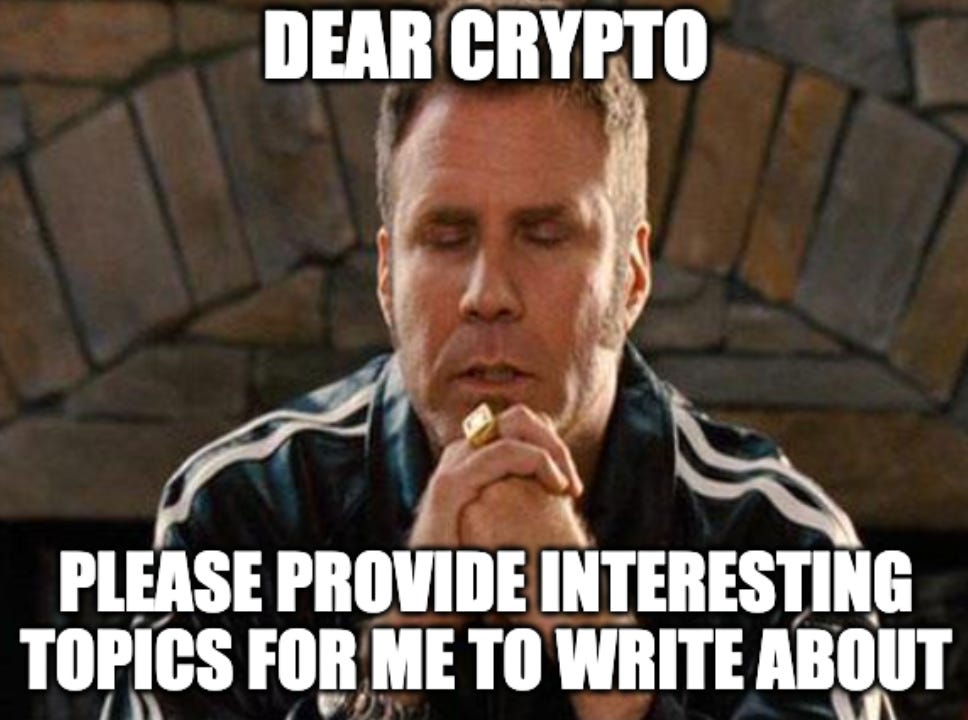
1-9-90 Community
Earlier today, I stumbled upon a piece by Ivangbi about community and brand building via the 1-9-90 framework. If you’ve seen the term 1-9-90 before, it’s likely related to social media and internet communities:
1% are creators
9% occasionally create or engage with the content via replies, editing content, or other methods based on the platform
90% are lurkers who observe the content but don’t actively participate
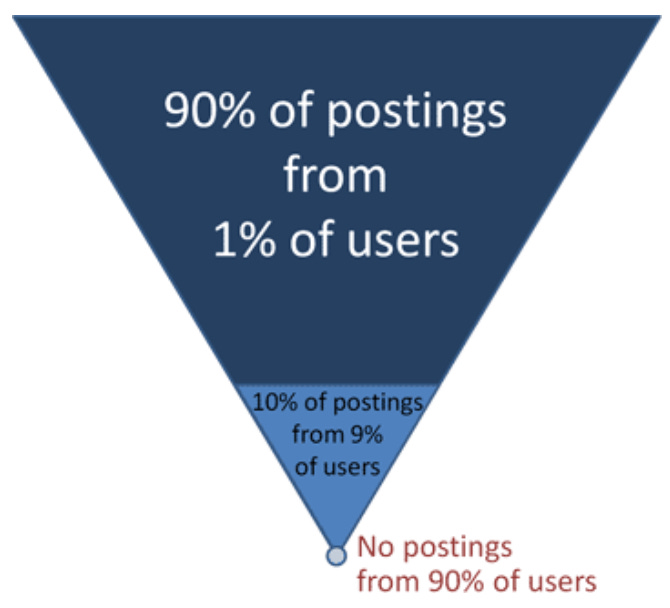
Ivangbi applies a similar framework in the context of ecosystems like Ethereum:
1% are devs, builders, teams, and those who create.
9% are writers, funds, researchers, and angels who passionately observe the space and make some commentary. Not really teams, but not passing-by noobies either.
90% are random traders and speculators who actually don’t ever read docs. They read headlines, buy and trade coins, and hold crypto - but they are not bothering themselves with questions of research. Just yellow press enoyers and traders. They are not stupid, they just don’t bother to get married to any investment. Fundamentals for them don’t exist usually, they just want charts.
Similar to social networks, the 1, 9, and 90 in these communities and ecosystems all have an important role to play and have symbiotic relationships with each other, with the 9 being the glue that helps to evangelize and bridge the gap between the 1 and 90 via capital, content, or other types of support.
One of the takeaways is that over time, some of these 9’s turn into the 90 (the other direction happens as well!). This may be due to:
personal reasons: “I’m not as excited as I was in the past”
shifting sentiment: “a builder said something I don’t like, time to change my opinion”
financial reasons: “I didn’t 10x in a month, this project sucks”
This is a helpful framework when we think about communities:
Who are the 1%, 9%, and 90%?
How does the 1% keep the 9% aligned on the vision for the community or project?
How does the 1% keep the 9% involved and excited via events, announcements, and creative initiatives?
Who is shifting from 9% to 90%? Who is shifting from 90% to 9%? Why? Is there anyone from the 9% that should be brought onto the team, aka turning the 9% to the 1%
Blockchain and the financial incentives that are baked in allow for these shifts to happen more quickly than before.
I encourage you to read Ivangbi’s piece as he provides a much more nuanced take on this, especially in light of Vitalik’s recent comments around DeFi. I’m just riffing on top of his thoughts.
Cyrypto's AirTag Moment
I also came across a piece from Nascent (VC fund) around zkTLS and how it is Crypto’s AirTag moment.
TLDR:
zkTLS or Web Proofs enable parties to authenticate data and its source, eg: ESPN reported that the Warriors beat the Lakers, someone purchased a concert ticket, or someone has taken 100 rideshare trips
This is possible by combining TLS Notary and zero-knowledge proofs (ZKPs), which preserve privacy
This allows web2 data to be put onchain verifiably, without the data source needing to take any action or being able to prevent it
Current use cases are rudimentary, such as proving ownership of a social account
In the context of airdrops, future applications of Web Proofs allow for any internet activity to become a qualifying activity
This last point is where it gets interesting. If you’re able to authenticate that you did X online, you can qualify for an airdrop. Or in offchain speak, you can qualify for a promo or offer that’s personalized based on your activity. It doesn’t have to be a generic $5 signup bonus, it could be a $5,000 signup bonus for the right person.
Some hypothetical examples to make the concept less hypothetical 😂
A DEX can provide an airdrop or incentive to Robinhood traders who are active and have traded more than $X in a month
Teleport can provide rideshare users free rides or bonus discounts based on their ride history with other rideshare apps
TravelSwap can provide exclusive flight and hotel offers to power users when based on their travel history from other booking platforms
Not only can airdrops (or promos) be targeted to offchain users, they can be a complement to onchain airdrops. For example, a web3 gaming company can provide a point boost when players verify their League of Legends or Fortnite rank.
This may still take some time to develop, but the ramps are widening, and vampire attacks will eventually bring virality that expands beyond the limitations that were previously set.
Do you have internet activity? If so, make more by sharing or subscribing! Or let’s chat!
Kaito Socials
Kaito is a web3 information platform, like a Bloomberg Terminal without the trading. The platform has tools that monitor sentiment analysis, token mindshare, narrative mindshare, smart alerts, and more.
They also achieved the rare accomplishment of profitability a few months ago.
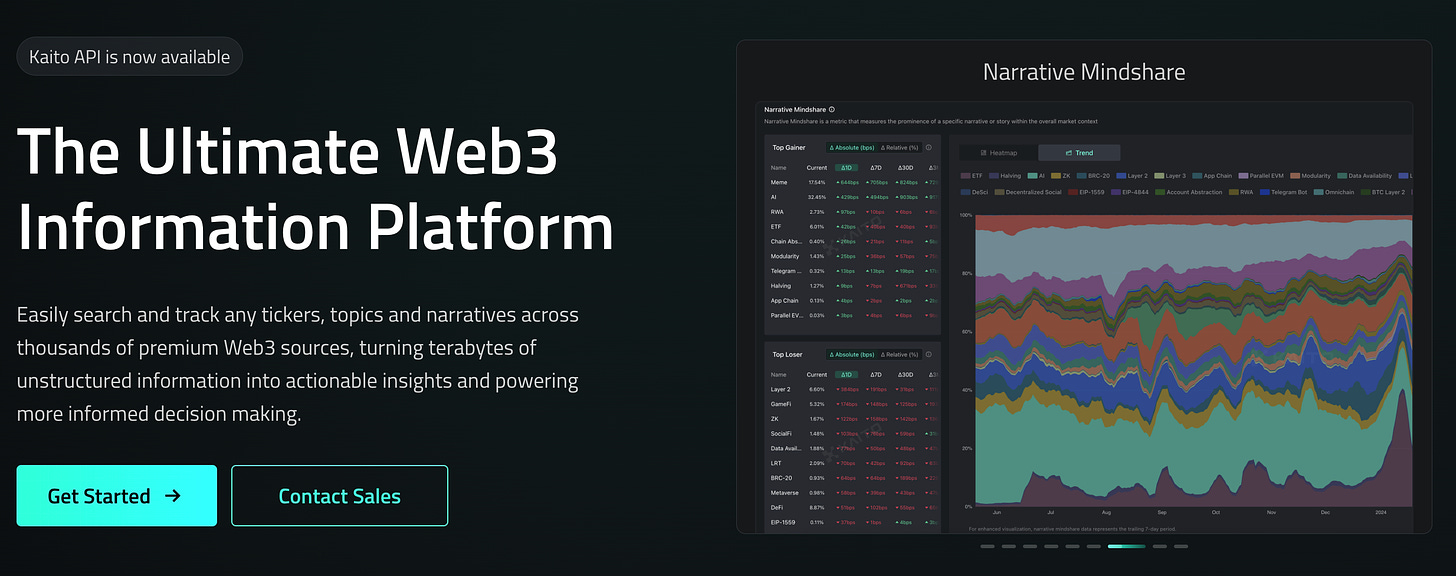
The tool itself seems amazing (and has a price that seems to justify it), but what’s also noticeable is that their product is a cheat code for content. Kaito’s product is a great example of content product market fit, an enviable position to be in.
Instead of wondering ‘What content do I need to push out and create for the audience today?’ and posting second-rate takes on repetitive topics, Kaito’s content lead can use the product to determine what topics to create content for in near real-time.
Some examples:
Getting users to reply ‘Kaito’ and the intern replies with their most popular tweet in 2024 thanks to Kaito’s social tooling
Sharing a summary of what Story Protocol is following their $140 million fundraised announcement
Highlighting the mindshare leaders around the topic of prediction markets
Kaito is able to provide meta-commentary and use data to back it up, all while showcasing the product in a way that isn’t salesy.
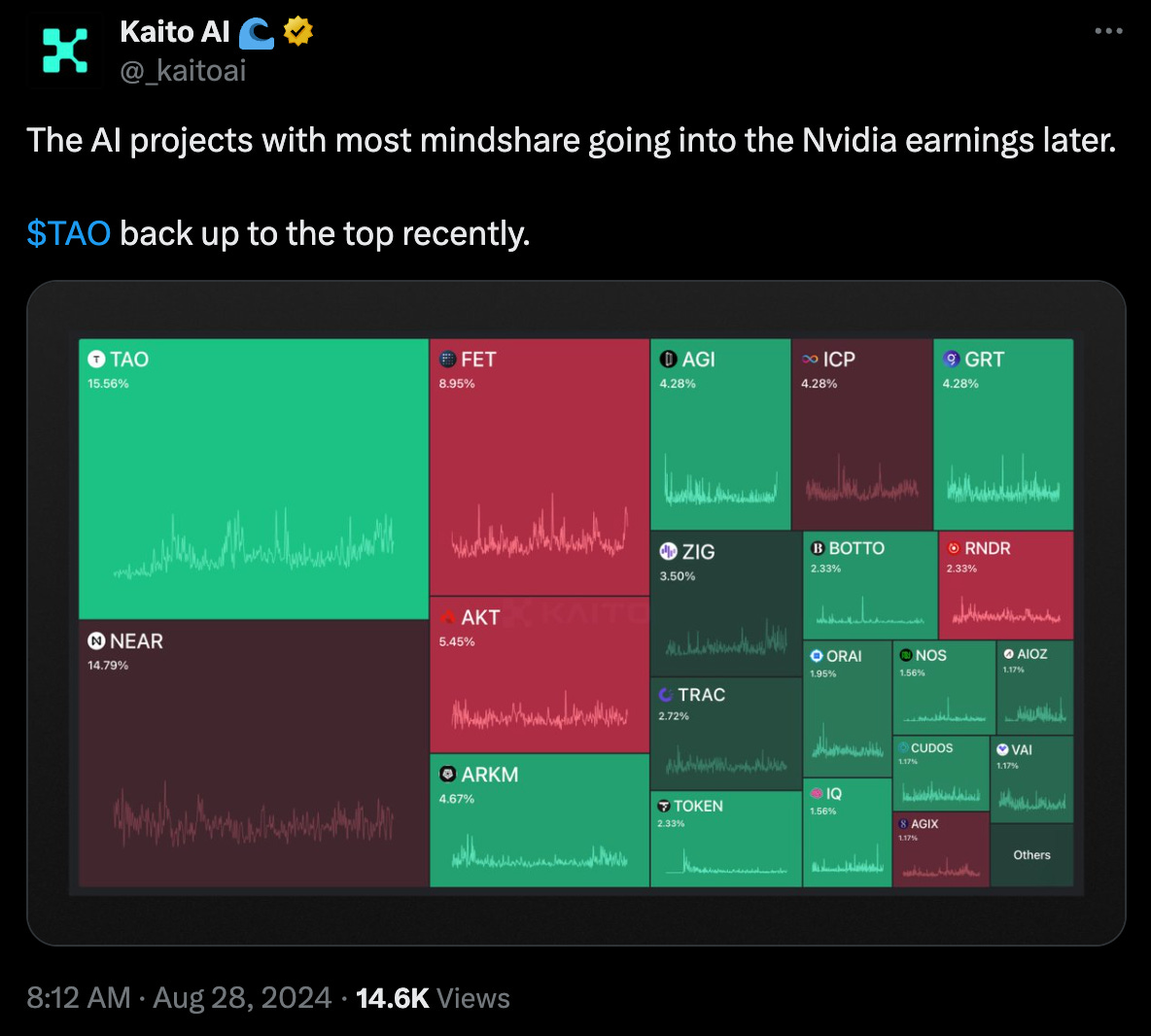
This meta-commentary approach is being adopted by a Kaito subscriber, lostwisdom (I’m assuming they’re not an employee). Lostwisdom uses Kaito as a tool to provide context on the NFT market and certain collections making large moves in sentiment or price. Some examples:
Mutant Apes with the largest increase in mindshare and why
Azuki with the largest positive move in sentiment and why
Specific digital art collections being talked about
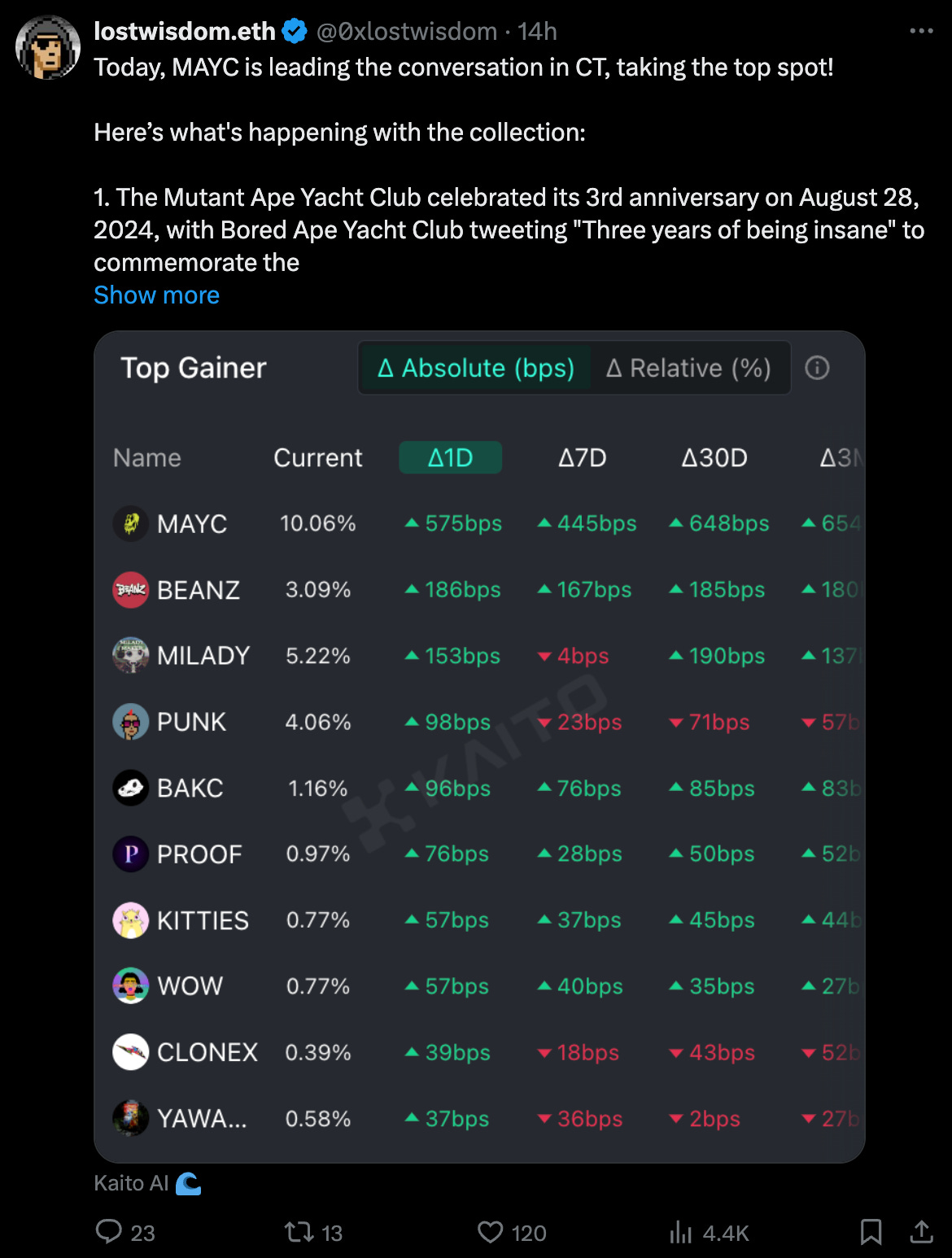
In the case of lostwisdom, Kaito is being used as a tool to grow their social following while providing insights on when to buy and sell if they’re trading NFTs. Big brain move.
I need to figure out how to get my hands on a complimentary subscription.
See you next week!
